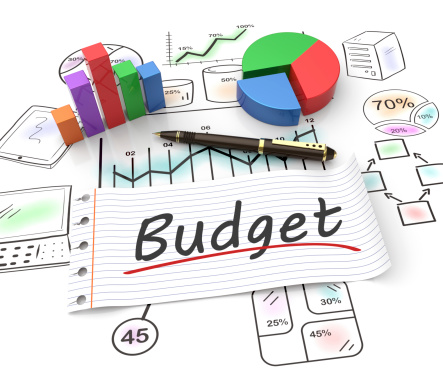By Leanne Ross
You can have the best business idea or product invention in the world, but if no-one knows about it, how will you find customers? That’s where marketing comes in.
However it can be difficult for small businesses to know exactly how much of their budget to allocate to marketing activities. You know you need to promote your business to grow, but you don’t have the kind of profits available to reinvest that larger companies would have.
The guidance most often quoted is the figure of 5-10% of your overall company gross profits. This also seems to be the most heavily practiced in the business world, if you look at research such as the cmosurvey.org. It proved that projected marketing spend continues to fluctuate between around 4 and 8%.
Of course the other challenge with small business marketing is where to concentrate what small funds you do have.
The same survey data showed a sharp contrast between digital growth and offline decline. By 2020, digital advertising spend is expected to surpass TV ad spend by 36%.
So with the average small business profit figures not sitting in the million dollar column, that leaves us a relatively humble marketing budget. Couple that with the plethora of places to market a business, how do you decide where best to focus your limited resources?
Do the Math
Firstly, you need to work out what surplus you have to dedicate to your marketing budget.
Startups: If your company is still in the idea stages, or you’ve started but you’re still bootstrapping and your “office” is a bedroom or the local coffee shop, then the likelihood of spare funds for marketing is low. And yet this is the time when you need to invest the most in promoting your new products and/or services. That may mean your marketing budget exceeding your projected profit. And it may mean experimenting to find what works, so that you can refine it in year two.
Young companies: Once you’ve been in business a few years, this the point at which the 10% of the profits you expect is a useful budget indicator for marketing activities. By now you can start to focus on target audiences, and you should have started to learn from past mistakes about where to get the best return for your spend. This might mean only certain online advertising, or it could even mean that you focus on traditional methods only, to reach your potential customers.
Established small businesses: If you survived the first few years when most small businesses are in danger of folding, then firstly take a pat on the back. But it’s no time to rest on your laurels; marketing budgets tend to lower after the 5 year mark to somewhere in the region of 6% of profits. However, these profits tends to be larger than when a company first started trading. So actually, the spend is higher. Bigger, established brands succeed because they have more budget to take risks than small businesses. This is the time to trial new things and begin to take on larger competitors for more market share.
Traditional vs. Digital
In most marketing industry reports digital marketing spend still represents at most around 40% of the overall marketing budget.
Forrester Research’s Digital Marketing Forecast report showed that in 2016 the average firm expected to allocate 30% of their marketing budget to online marketing.
Of course, how you spend your budget is ultimately driven by the nature of your business, the marketplace you’re operating in, and how your potential customers behave through the purchasing journey.
This will require you to do your own research to find out where our customers are and where you need to be seen to have the most chance of them finding you. It may mean a certain element of trial and error too, particularly if you’re doing something new and innovative.
The trick is to not be lured into the false assumption that all modern marketing should be online, simply because it’s new and hip and everyone is doing it.
In fact, in an increasingly online world, bombarding us with online messages, consumers are actually responding well to more personalized marketing tactics. Research is showing traditional email and printed direct mail marketing continuing to perform well in the marketing mix.
The Intelligent Data Group 2016 statistics showed that £12.7 billion was invested in direct mail during 2014 in the UK alone. Much of it did incorporate digital data (such as contact details), while some included digital products like QR codes and PURLS (personalized web addresses) to guide interested customers through a personalized marketing funnel and increase sales conversion rates.
In this way, traditional marketing spend like printed collateral, can work to boost digital efforts too. With 30 pallets of paper used per week, online supplier Quinnstheprinters.com can attest to the continued relevance of printed collateral in small business marketing, as they move 3,600 tons of paper each year. This is comprised of some 75,000 individual orders – a total of 185,000 parcels sent each year.
Other Things to Consider
Your business may need a physical location like a shop front, for example, because you rely on footfall business. That cost should be included within your marketing spend. If this is your business then printed materials such as posters, point of sale branding or local flyers may take priority in much of what’s left of your marketing spend.
You also should remember the breadth of things included under the “marketing budget” heading, such as marketing staff, customer relationship management and database systems, fees paid to agencies and other outside suppliers, advertising costs, media spend, etc.
Leanne Ross is a writer at Glaze Digital working with a range of small businesses, researching how business strategy and marketing is changing across industries in the digital age.







